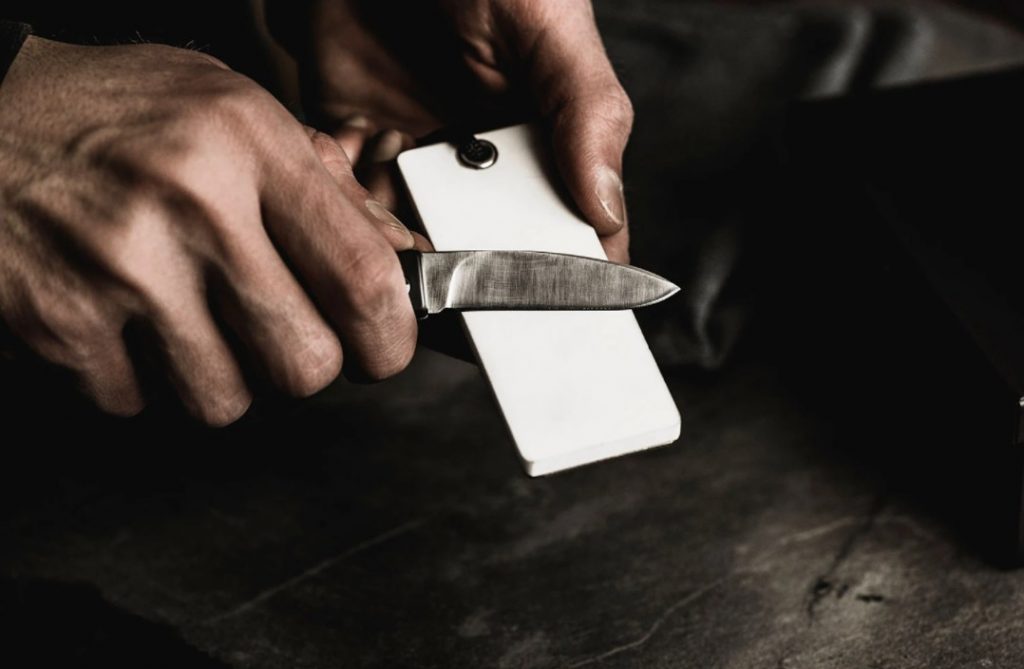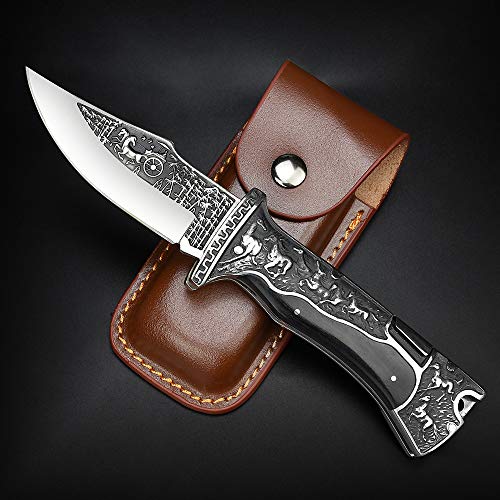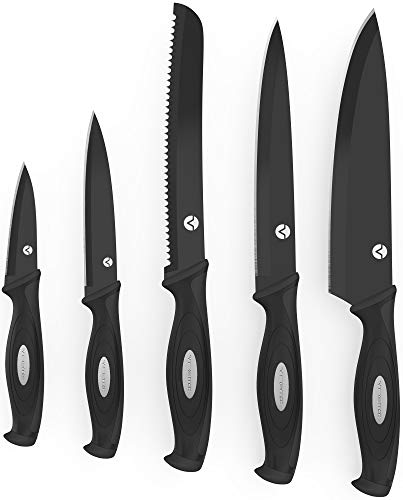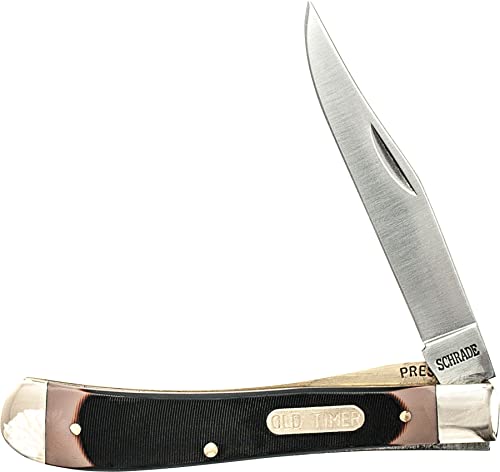How To Sharpen A Pocket Knife?
How to Sharpen a Pocket Knife is a frequently asked question by many new knife owners. A dull knife blade needs to be restored and in this article we will explore how to do just that. First, when you take the time to purchase a new pocket knife, inspect the blade for dullness. If it is visibly dull, remove it from its package and use a dull-biting product such as a steel dulling paste, an old toothbrush, or something of the sort. When you have completed this step, check the blade for any rust.
To sharpen a knife, you will first need to obtain some specialized tools. While many knife enthusiasts debate whether or not to sharpen the knife with a stone, diamond-beaded stone, or an ancient Japanese water stone, most knife enthusiasts recommend that beginners to go for a wooden whetstone. A wood carving tool such as these two products can produce a deep, brilliant, and non-absorbent shine on your blade, making it easier to maintain.
How to Sharpen a Pocket Knife with a Whetstone
How to Sharpen a Pocket Knife With a Whetstone. There are several ways of sharpening pocket knives. The best method is to use a pair of specialized whetstones for extra leverage and increased control. How to Sharpen a Pocket Knife With a Whetstone
Pocket knives can be very difficult to sharpen. The edge is very thin and tends to be blunt from the edges. Because of this, it is necessary to use specialized whetstones on a regular basis to keep your pocket knife at its best. How to Sharpen a Pocket Knife With a Whetstone
Pocket knives are usually small, but they can be quite large when they are compared to other types of sharpeners. There are several different types of sharpeners available. The first type is a compound knife sharpener. These sharpen edges by using an abrasive material that is very similar to the bevel of a saw blade. They are commonly used for light duty cutting chores.
Another type of sharpener is a solitaire plate sharpener. This type of sharpener uses tiny stones to sharpen the blade. The advantage of using these sharp objects is the flat surface that it provides. It makes it easier to cut, and because it is flat, you do not risk the chance of your hand slipping against the knife’s handle as you are cutting.
The third type of sharpener is a bevel hone tool. A bevel hone is used to give a very sharp edge to a knife or to provide a medium coarse grit cutting edge. Because this type of sharpener takes a slightly longer time to bring the edge to a level, they are usually only used on heavier knives. Some people prefer to use bevel hone tools on knives with tapered blades, but you should check with the manufacturer to see if it is safe to do so.
One of the newest methods of sharpening a knife is using what is called an electronic bevel whetstone. An electronic whetstone is a small handheld electric whetstone that is similar to the bevel sharpeners found in jewelers’ shops. Instead of using coarse grit paper to sharpen the edge of the knife, it works by using a conductive metal probe that has a variety of sharpening pads on one side. When you put the knife into the probe, the sharpening pad transmits energy into the knife and quickly dulls the bevel. The amount of time it takes to bring the edge to the desired level depends on how sharp the bevel stone is.
These electronic bevel sharpeners work in a similar way as bevel sharpeners, except they do not require any kind of paper to apply the steel to. However, as they are much smaller than bevel sharpeners, it may take more than one use of the device for a decent straight edge. This type of sharpening is ideal for knives that need to be sharpened daily or for use in a multiple-blade setting. Because they are small, you can carry several of them around at once, or place them in a flash drive and easily carry it to your job site.
You can find electronic sharpeners that are made of plastic or ceramic. However, they are not as ergonomically friendly as a whetstone, especially if you have trouble gripping the device. The plastic models tend to scratch easily, as well. Ceramic models are popular because they are small and nearly indestructible. If you want to learn how to sharpen a pocket knife with a whetstone, try searching online for “whetstone pocket knives,” “pocket knife sharpening whetstone,” or “tips on sharpening pocket knives.”
How to Sharpen a Pocket Knife with a Stone
How to sharpen a pocket knife with a stone has been a question asked by many enthusiasts of pocket knives for years. The majority of them have found that it is very simple to do. Some of these people have even tried it in the field without any luck. The answer to this question lies in understanding how a real pocket knife works.
A real pocket knife contains a blade that is not part of the handle. The blade contains a hard outer surface called a sharpener. The best method to sharpen such a knife is to apply one or more whetstones to its surface. It is a kind of stone with the right adhesive properties for perfectly sharpening even steel blades. The surface of such a knife is very smooth, but there is a ridged texture which is useful for removing the majority of the dullness that comes from using a dull knife.
The first step of the sharpening process is ensuring that the blade is at an appropriate angle. This is called bevel angle. The bevel angle of the blade should be as low as possible, because it helps to eliminate the chipping caused by an improperly sharpened edge. The amount of bevel angle needed may vary depending on the type and make of the knife. For example, a pocket knife made of wood will need to have a lower bevel angle than one made of metal.
The second step in the process is heating the honey until the desired level of sharpness is reached. High heat is required in order to remove excess material from the surface of the blade. However, this method is also the cause of the majority of the problems associated with sharpeners, since the heat can cause damage to the metal or stone used as a sharpener. A much safer option is to use ceramic stones. These stones are especially safe since most ceramic stones have a very high degree of hardness, meaning that even tiny particles of dirt or other hard materials will have no effect on the surface of the stone.
The third step in the process is normally referred to as coarse grinding. This step removes smaller defects and irregularities from the surface of the knife‘s blade. Since the majority of kitchen knives have sharp edges, this step is usually performed on a regular basis. The type of grinder being used will determine the level of coarse grit it requires. For example, diamond sharpening stones require much larger and more constant grit adjustments than most other types of sharpeners. However, these stones deliver a sharp edge with very little effort.
The fourth step is considered the final step. It is the time to polish the dull blade. Many people believe that diamond stones accomplish this task, but in actuality plastic or stone polishing pads can accomplish the same goals. These polishing pads contain a fine powder that when applied to a dull blade automatically dulls it. While plastic and stone polishing pads are convenient, they do not always achieve the depth required to make a true diamond-like edge.
The fifth step involves the actual cutting of the stone or gem into the desired shape. The gem or stone must be sharpened along the grain in order for it to cut properly. Some people actually dull their knives by striking them against a hard surface, such as a table. While this may work to dull some metals, it is not recommended for blades with gemstones. It is also important to note that not all gemstones are suitable for use with most types of sharpeners.
The final step in sharpening a knife blade with a stone involves cleaning the sides of the blade with a soft dry cloth. The outside edges of the blade will be dulled and need to be properly wiped down with a dry cloth in order to remove all excess grit. Once the sides of the blade have been properly cleaned, a small amount of rough grit should be added to the blade. A metal file should be used in order to increase the grit size. Once the grit size is adjusted to the desired level, it is time to place the blade in a diamond-tipped grinding stone holder.
How to Sharpen a Pocket Knife with Household Items
How to sharpen a pocket knife with household items is a common subject for many people. After all, not everyone lives by a sharp blade. While it is possible to visit your local jeweler and have him sharpen the blade for you, it is also simple enough to learn to do it on your own. If you are looking for a great way to give your pocket knife that professional look, then honing it is a great option. This can give your knife a worn in look that will be very easy to care for.
There are many different methods of honing a pocket knife. Some of these methods include oiling the edge, flipping the knife over, using household items as a stropper, and using a nylon strap to sharpen the edges. These are just some of the different methods that can be used to take the edge of your blade to a higher level of sharpness. Each method has its pros and cons.
Oiling The Pocket Knife With household items as a stropper is an easy way to sharpen a knife. All you need is a small amount of oil to be spread onto the surface of the blade. Many people like to use coffee cups as a method to this, as the plastic coating on the coffee cup will transfer a small amount of oil onto the surface of the blade. When you are ready to begin the process of honing your pocket knife, it is important to remember to always place the blade in the water, so that the oil will remain there instead of just floating around in the air. This way, the blade will get all of the proper lubrication that will help it to remain sharp.
Flip the Knife-Edge The first method that many people use to sharpen their pocket knives is flipping them over. To do this, take the reverse side of the blade out, which may be either the tip or the bottom of the blade. You then flip this over, and slide it back into position. You will then have two sides of the blade, which is now the top and bottom.
Rubber Bracelet Strop Honing The second method of sharpening a pocket knife edge is to take a rubber bracelet and wrap it around the blade. This is done in a gentle manner, and you should see no damage to the knife edge when you are finished. The main thing that you must be careful of is the fact that the bracelet will get in the way of the actual sharpening process, so make sure that it is placed well enough up above the point where the actual sharpening will take place. This way, it will keep the blade from slipping down into the grooves.
Bevel The third method used for sharpening a pocket knife edge is to use a bevel tool. A bevel tool is a diamond shaped protractor, and like the other methods used to sharpen the blade, it is best if you do not remove the blade in the process. Instead, the beveled edges should be filed down using a beveling stone. If the bevel becomes blunt, simply file it down some more until it is the same size as the handle of the pocket knife.
Wet Paper Towel Sharpeners is another option for someone looking at how to sharpen a pocket knife. These type of sharpeners require that you press the soft cloth button on the tool, and it will automatically perform the desired action. When comparing these types of tools to other methods of sharpening, it should be noted that these are much gentler on the edges. The downside to using a wet paper towel to perform the action is that they will eventually become dull, so they must be replaced.
These three methods of sharpening a pocket knife are great for the do-it-yourselfer. They give a quick and easy sharpening solution, which is much less expensive than buying a new tool. Just remember to perform these sharpening methods on a well-sharpened blade to ensure that your edges are truly ready to be used. With a little practice, you can get very good results with any of these methods.
How to Sharpen a Pocket Knife Without a Stone
A lot of people consider honing and or polishing their knives as being the same thing, but they are very far from being so. The term “honing” is used when you are actually polishing an edge of your knife. Polishing is something that you do by applying a certain amount of pressure on the edge of the knife with the flat side of a file or your honing stone. On the other hand, honing is simply the process of removing material from the edge of the knife by grinding. So, is there a difference between the two?
One of the main differences between honing and polishing is in the method of application. When you are honing, you are working on making the edge smoother and will have it ready for another knife to be sharpened. This happens as part of the cutting process and is often done by putting pressure on the edge of the blade. The result is a dull knife edge that has been reshaped. This is often done by using a steel file or a file with very sharp edges that scrape off material from the edge. The reason why this is done is to protect the surface of the blade and prevent it from rusting.
Another reason why this happens is because some manufacturers make pocket knives that are more difficult to sharpen than others. As a result, a lot of people end up having to sharpen these knives on their own. This can easily be done at home with a honing stone and file.
You can also purchase some very useful and affordable whetstones from many retailers. The best way to choose which one you would like to use is to go to a store that specializes in pocket knives and see which ones they have available. Once you know what kind of blade that you want to get Sharpening whetstones for you will be able to decide between buying them separately. Buying them separately may seem like a good idea, but in the long run you will probably be better off just buying a whole box of them.
Many people are intimidated by the task of sharpening knives. The truth is that a lot of the time, when you buy a new knife, the company will send you a whole package of sharpening materials so that you can sharpen your own knife. The sharpening stones that they send you usually come with directions for the proper way to use them. There is really nothing that you need to learn in order to sharpen a pocket knife properly. Of course, there are times when you really need to understand how to use a specific kind of sharpener, especially if you are going to be using it a lot.
If you want to learn how to sharpen a pocket knife then you have to know the different kinds of blades that are out there. You can find pocket knives that have different blades such as folding blades or fixed blades. If you have never bought a pocket knife before then it would probably be a good idea to purchase a fixed blade so that you know what you are doing. Once you know which kind of blade that you want to get Sharpening whetstones for you will be able to buy them at any sharpen or knife shop. If you are really unsure about which one to get, you can also go online and look up different reviews so that you can see which ones people liked best.
Another thing that you will need to keep in mind when learning how to sharpen a pocket knife without a stone is where to get the best sharpeners. While the sharpeners that are sold in most stores are not typically sharpeners that you will need very often, you should still be able to find some that will be more than enough for your needs. One of the best places to get sharpeners that are very commonly used is at a local hardware store. Hardware stores are commonly available all over so it should not be too hard to find one in your area. Another place that you should definitely check out is a department store such as Sears, Target, K-Mart, or Walmart. These places are also commonly available all around so you should have no problem finding a decent selection of sharpeners in these places.
These are just a couple of things to keep in mind when learning how to sharpen a pocket knife without a stone. There are many other ways that you can sharpen your knife as well so make sure that you learn about the different methods that you can use. A good sharpening stone should help you get the best results when sharpening your pocket knives and other tools. The best part about using a sharpening stone is that you don’t have to worry about getting scratched up while sharpening your tool.
Conclusion
To get started, make sure that you have a clean work surface and that you have a block that is at least as long as the knife itself. Take your file (the wide, square metal handle) and slowly run one side of the file through the handle until the filed side of the block is parallel with the edge along the knife’s grain. Stop right away if the file comes out even on the first pass. If it does on the second pass, stop and put the file down. It’s better to catch the edge on the third pass because it will be closer to the point where the blade will need to be sharpened.
Read more:





